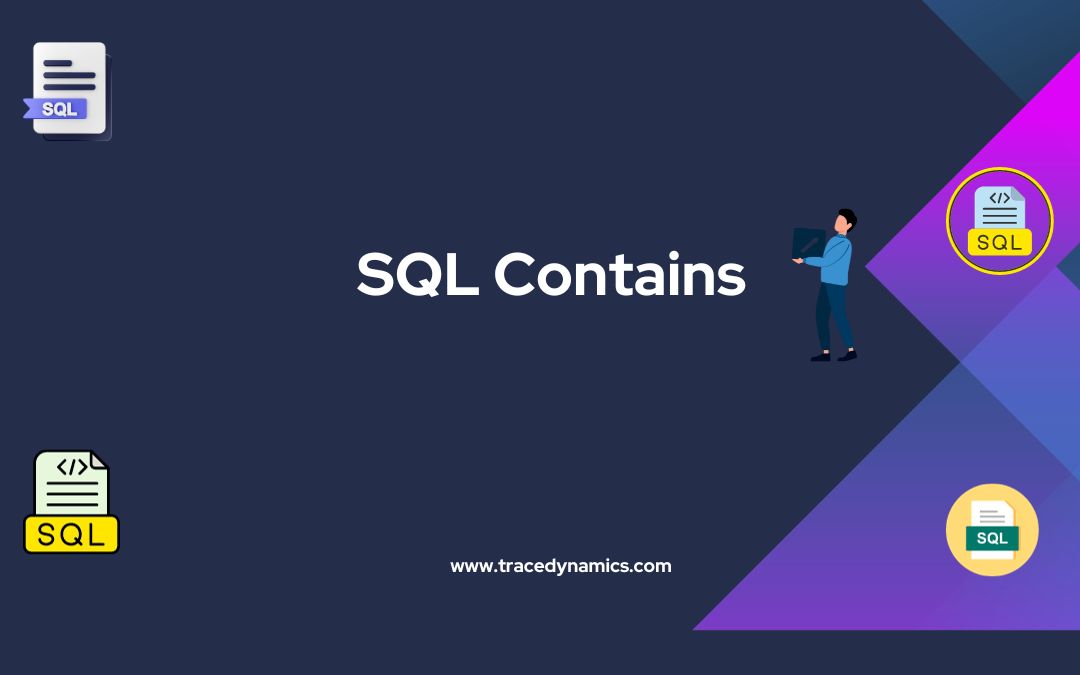SQL, the cornerstone of relational database management, empowers users to efficiently manipulate and retrieve data. But what about searching within that data, particularly textual information? Enter the CONTAINS keyword, a powerful tool for unlocking the full potential of text search in your SQL queries.
Introduction
CONTAINS keyword is part of the full-text search capability in many SQL database systems. It allows users to perform complex searches on text-based data columns, going beyond the basic LIKE operator.
Understanding Contains:
- What it is: A keyword used in SQL for advanced text searching.
- Where it’s used: Primarily in text columns of SQL databases.
- Why it’s important: Enables detailed and efficient text searches.
Why Use CONTAINS?
- Advanced Text Search: Go beyond simple pattern matching with LIKE and search for entire phrases, keywords, or even proximity relationships between words.
- Full-Text Indexing: Achieve blazing fast search speeds with full-text indexing, making large datasets easily searchable.
- Improved Data Analysis: Extract deeper insights from your data by leveraging the flexibility of CONTAINS for complex searches and filtering.
Getting Started with Contains
Basic Syntax and Usage
SELECT column_name
FROM table_name
WHERE CONTAINS (column_being_searched, 'search_term');Example: Searching for a Phrase
SELECT title, author
FROM books
WHERE CONTAINS (description, '"database management"');Advanced Techniques in Using Contains
CONTAINS offers various functionalities for advanced text searches:
- Proximity Search: Find words appearing close together, like “database NEAR management”.
- Weighted Searches: Assign weights to different keywords to prioritize specific terms in the search.
- Fuzzy Search: Match words with typos or variations.
Proximity Search
SELECT title, author
FROM books
WHERE CONTAINS (description, 'database NEAR management');Weighted Searches
SELECT title, author
FROM books
WHERE CONTAINS (description, 'ISABOUT (database WEIGHT(0.7), management WEIGHT(0.3))');Understanding CONTAINS vs. LIKE
| Feature | CONTAINS | LIKE |
|---|---|---|
| Complexity | Handles complex searches with phrases & proximity | Limited to simple pattern matching |
| Full-Text Indexing | Requires full-text indexing for optimal performance | No indexing requirement |
| Flexibility | Offers advanced features like weights & fuzzy search | Less flexible for complex search scenarios |
Troubleshooting and Best Practices
- Double-check syntax and ensure proper full-text indexing setup.
- Optimize queries and indexes for large datasets to avoid performance bottlenecks.
- Utilize CONTAINS in conjunction with other SQL clauses and functions for more powerful searches.
- Regularly update full-text indexes for optimal search results.
Internal Links for Additional SQL Insights
TraceDynamics offers several relevant articles to expand your SQL knowledge:
- Dive deeper into SQL specifics with this guide on Oracle SQL.
- Learn about SQL optimization techniques in this article on SQL Optimization.
- Discover advanced SQL features in our guide to Advanced SQL Features.
Frequently Asked Questions (FAQs)
What is the purpose of Contains in SQL?
Contains SQL is used for advanced text searching within databases, allowing users to perform complex searches on text-based data columns.
How does Contains in SQL differ from the LIKE operator?
Contains allows for more complex text search functionality compared to the simpler pattern matching of LIKE.
Is full-text indexing required for SQL Contains to work?
Yes, full-text indexing is necessary for SQL Contains to efficiently search through large amounts of text data.
Can I use SQL Contains in any SQL database system?
While most modern database systems support some form of full-text search, the specific implementation of CONTAINS or equivalent may vary.
What are the common problems when using Contains in SQL?
Common issues include incorrect syntax, full-text indexing setup problems, and performance bottlenecks on large datasets.
How can I optimize the performance of Contains queries in SQL?
Optimizing performance involves proper indexing, query tuning, and using CONTAINS in conjunction with other SQL features.
What are some best practices for using Contains?
Best practices include understanding the specific syntax of your database system, regular index maintenance, and combining CONTAINS with other SQL clauses.
Are there any security considerations when using Contains in SQL?
Yes, it’s important to implement access controls and monitor Contains queries for security, especially when dealing with sensitive data.
Can I perform proximity searches with Contains SQL?
Yes, Contains allows for proximity searches, enabling you to find words or phrases near each other in the text using SQL.
Is Contains case-sensitive?
The case sensitivity of Contains in SQL may depend on the database system’s configuration. Some systems offer case-insensitive options.

